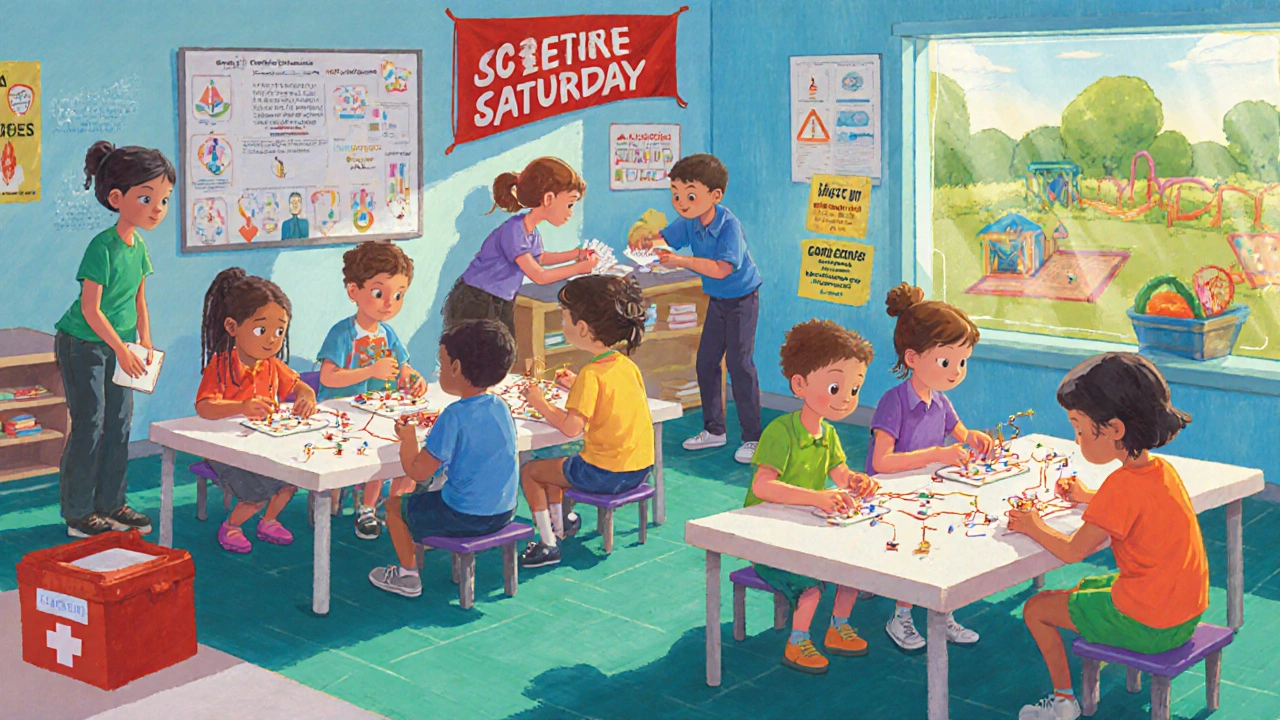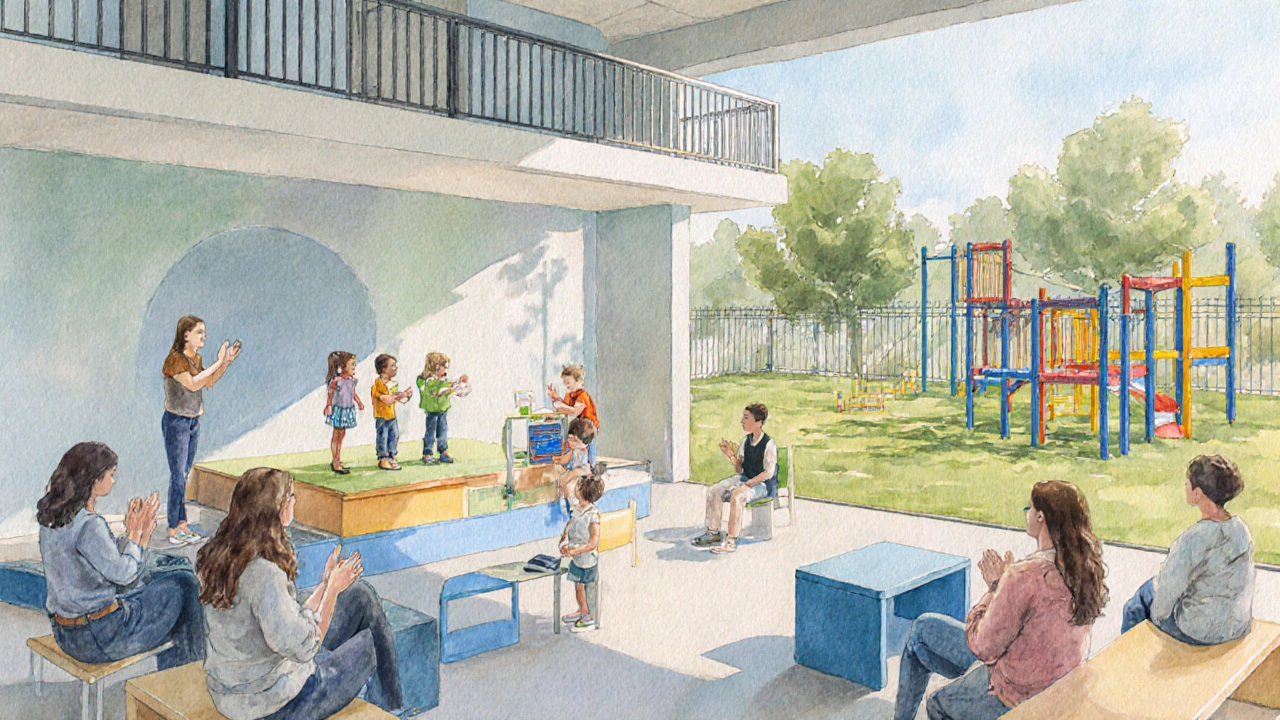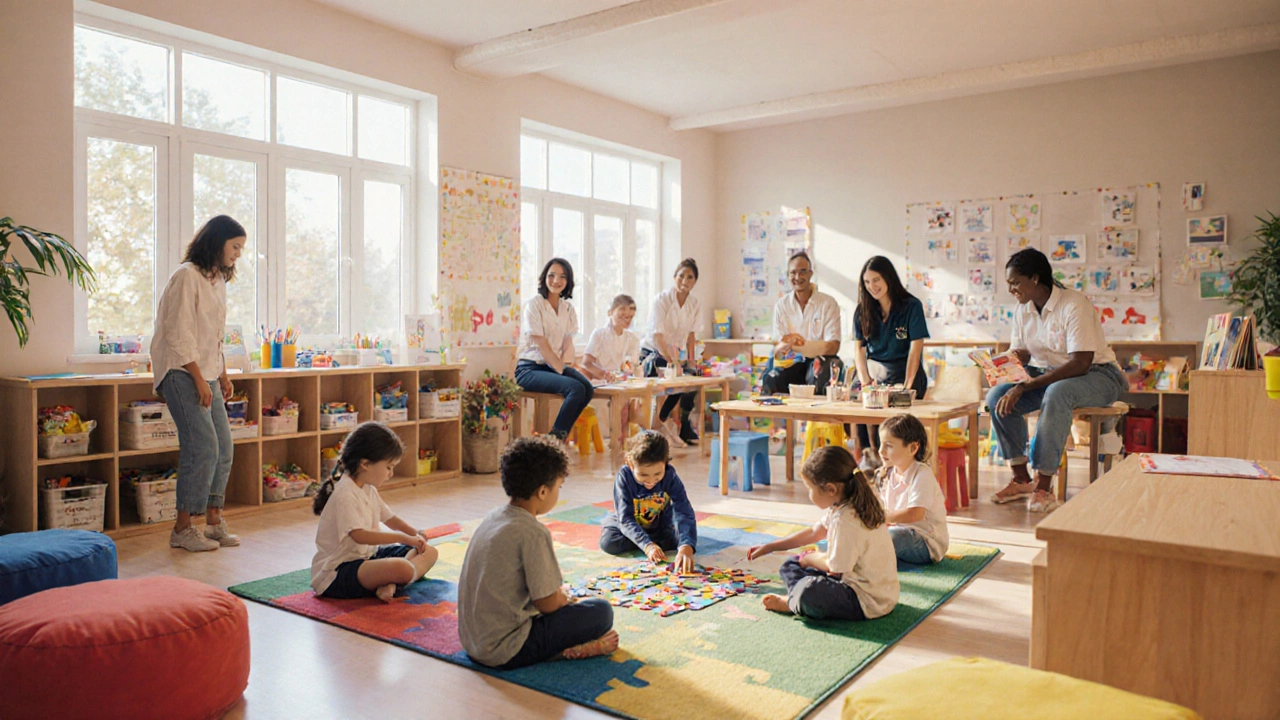Kids Club Quality Score Calculator
Evaluate potential after-school programs against the seven pillars of quality identified in child development research. Enter the club's details to get an evidence-based assessment.
Staff-to-Child Ratio
Critical for individual attention and safety
Safety Standards
Non-negotiable for child protection
Curriculum Quality
Balanced learning and engagement
Community Links
Expands resources and opportunities
Facility & Activities
Environment that inspires learning
Overall Assessment
Overall Quality Score
When families search for an engaging Kids Club a structured after‑school setting that blends play, learning, and social interaction, the first question is often: what makes it truly good?
Understanding the Core Purpose
A good After‑School Program offers a safe, supervised environment for children after the school day ends does more than fill time. It supports Child Development the physical, emotional, cognitive, and social growth that happens from birth to adulthood by providing age‑appropriate challenges and encouragement.
Staff‑to‑Child Ratio: The Numbers Matter
One of the most concrete indicators of quality is the Staff‑to‑Child Ratio the number of qualified adults assigned to each group of children. Research from the New Zealand Ministry of Education shows that a ratio of 1:8 for ages 5‑7 and 1:12 for ages 8‑12 leads to higher engagement and fewer behavioral issues. When the ratio climbs above these benchmarks, supervision drops, and opportunities for individualized attention disappear.
Safety Standards: No Compromise
Parents will never compromise on safety. A reputable Safety Standards policies covering emergency procedures, staff background checks, and facility inspections should be visible on the club’s website and reinforced daily. Look for documented first‑aid training, regular fire drills, and a clear child‑pick‑up protocol.
Curriculum: Balancing Fun and Learning
Good clubs design a Curriculum a structured plan that blends creative arts, physical activity, and academic enrichment that aligns with school learning outcomes. For instance, a weekly “Science Saturday” where children build simple circuits reinforces STEM concepts while still feeling like play.
Community Partnerships: Extending the Reach
When a club collaborates with local libraries, museums, or sports clubs, children gain access to resources they wouldn’t otherwise have. These Community Partnerships relationships with external organisations that enrich programming also demonstrate the club’s commitment to the broader neighbourhood, which can boost funding and volunteer support.

Parental Involvement: A Two‑Way Street
Clubs that invite parents to volunteer, attend showcase nights, or contribute ideas tend to retain families longer. Parental Involvement active participation of caregivers in planning and executing club activities creates a sense of ownership and ensures the program matches community needs.
Facility Design: Space That Inspires
The physical environment matters. Bright, clutter‑free rooms with flexible furniture encourage creativity. Outdoor play areas that meet safety codes provide essential gross‑motor development. A well‑designed Facility Design the layout and equipment of the club’s premises can boost attendance simply because kids want to be there.
Activity Variety: Keep Them Curious
Monotony kills engagement. Successful clubs rotate activities weekly-art, music, coding, gardening, and drama-so children discover new interests. This Activity Variety the range and rotation of programs offered also helps staff gauge which options resonate most, allowing data‑driven improvements.
Comparison: Good vs. Poor Kids Club Attributes
| Aspect | Good Club | Poor Club |
|---|---|---|
| Staff‑to‑Child Ratio | 1:8 (younger); 1:12 (older) | 1:15 or higher |
| Safety Policies | Published, regularly reviewed, staff certified in first aid | Vague, outdated, no documented drills |
| Curriculum | Balanced, aligns with school, includes STEAM | Ad‑hoc, mostly free‑play without learning goals |
| Community Links | Partnerships with libraries, sports clubs, museums | None, isolated program |
| Parental Involvement | Regular newsletters, volunteer days, showcase events | No communication beyond emergency contacts |
| Facility | Bright, safe, flexible spaces; outdoor play area | Dull, cramped, limited outdoor access |
| Activity Variety | Rotating arts, sports, tech, nature projects | Repeats the same games daily |

How to Evaluate a Potential Kids Club
- Visit the site during an active session. Observe staff interaction and child engagement.
- Ask for the written safety and staff‑to‑child ratio policy.
- Review the weekly program calendar-does it show a mix of activities?
- Check for evidence of community partnerships (guest speakers, field trips).
- Speak with other parents about their experiences.
Following these steps will give you a clear picture of whether the club meets the standards outlined above.
Common Pitfalls and How to Avoid Them
- Overcrowding: If a club seems packed, ask for the exact ratio. A reputable club will be transparent.
- Lack of Structure: Clubs that rely solely on free play may miss learning opportunities. Request a curriculum overview.
- Poor Communication: When parents aren’t kept in the loop, issues can snowball. Look for regular newsletters or a parent portal.
Real‑World Example: Wellington’s Riverbank Kids Club
In Wellington, the Riverbank Kids Club illustrates many of the principles discussed. They keep a 1:9 ratio for 6‑year‑olds, run weekly STEAM workshops in partnership with the local university, and have a transparent safety handbook posted online. Parents receive a monthly e‑newsletter that highlights upcoming events and invites feedback. The club’s bright, modular rooms can be reconfigured for art, drama, or coding sessions, keeping the environment fresh.
Since implementing these practices in 2022, enrollment has risen by 35 % and parent satisfaction scores have climbed from 78 % to 94 % in annual surveys.
Key Takeaway
When you’re choosing or running a kids club, focus on ratios, safety, curriculum, community links, parent involvement, space, and varied activities. Nail these seven pillars, and you’ll create a place where children thrive, parents feel confident, and the community benefits.
What age groups can join a kids club?
Most clubs accept children from 4 years old up to early teens (12‑13). Some offer separate sessions for preschoolers and older kids to tailor activities appropriately.
How often should a kids club meet?
Typical after‑school clubs meet 2‑4 times a week for 1‑2 hours per session. Consistency helps children develop routine and allows deeper skill building.
Are meals provided?
Some clubs include a snack slot, especially for younger groups. If meals aren’t provided, they usually have a policy about packed lunches and allergy management.
What qualifications should staff have?
Ideal staff hold early‑childhood education certificates, first‑aid training, and undergo background checks. Experience in specific activity areas (e.g., music, coding) is a plus.
How can parents stay informed about daily activities?
Look for clubs that use a parent portal, daily email summaries, or a printed activity board. Regular newsletters also keep families in the loop.



